Top 5 deployment strategies in DevOps
 Ashwin
AshwinWhat is All at Once/Recreate Deployment Strategy -Comparison between all deployment strategies
What is Rolling Update
What is the Blue-Green deployment strategy?
What is Canary Release
What is A/B Testing
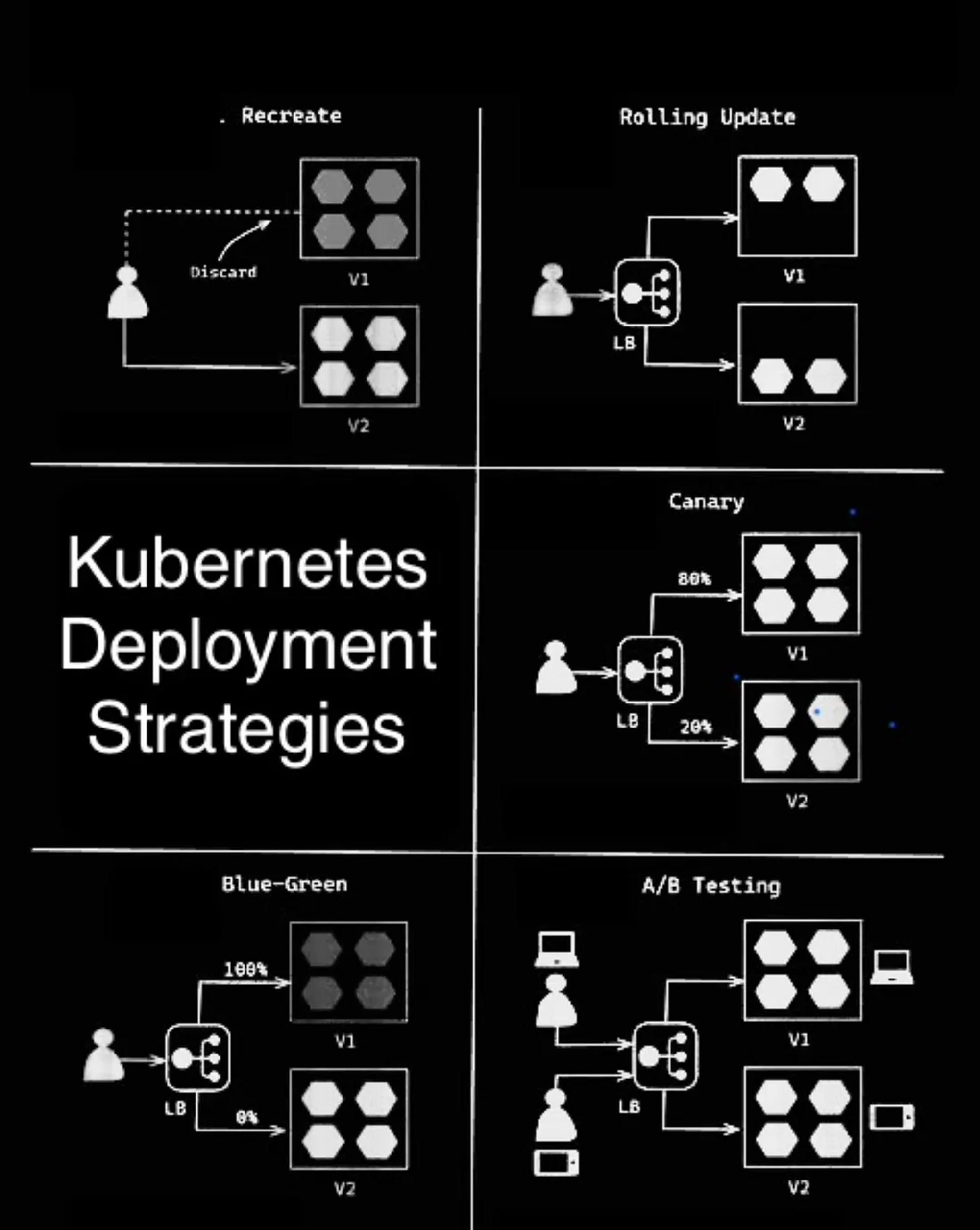
What is Deployment Strategy? 🤔
A deployment strategy is a plan for how to release and update software carefully to avoid problems for users.
Recreate 🔁
All old stuff is thrown away, then new stuff is put in its place.
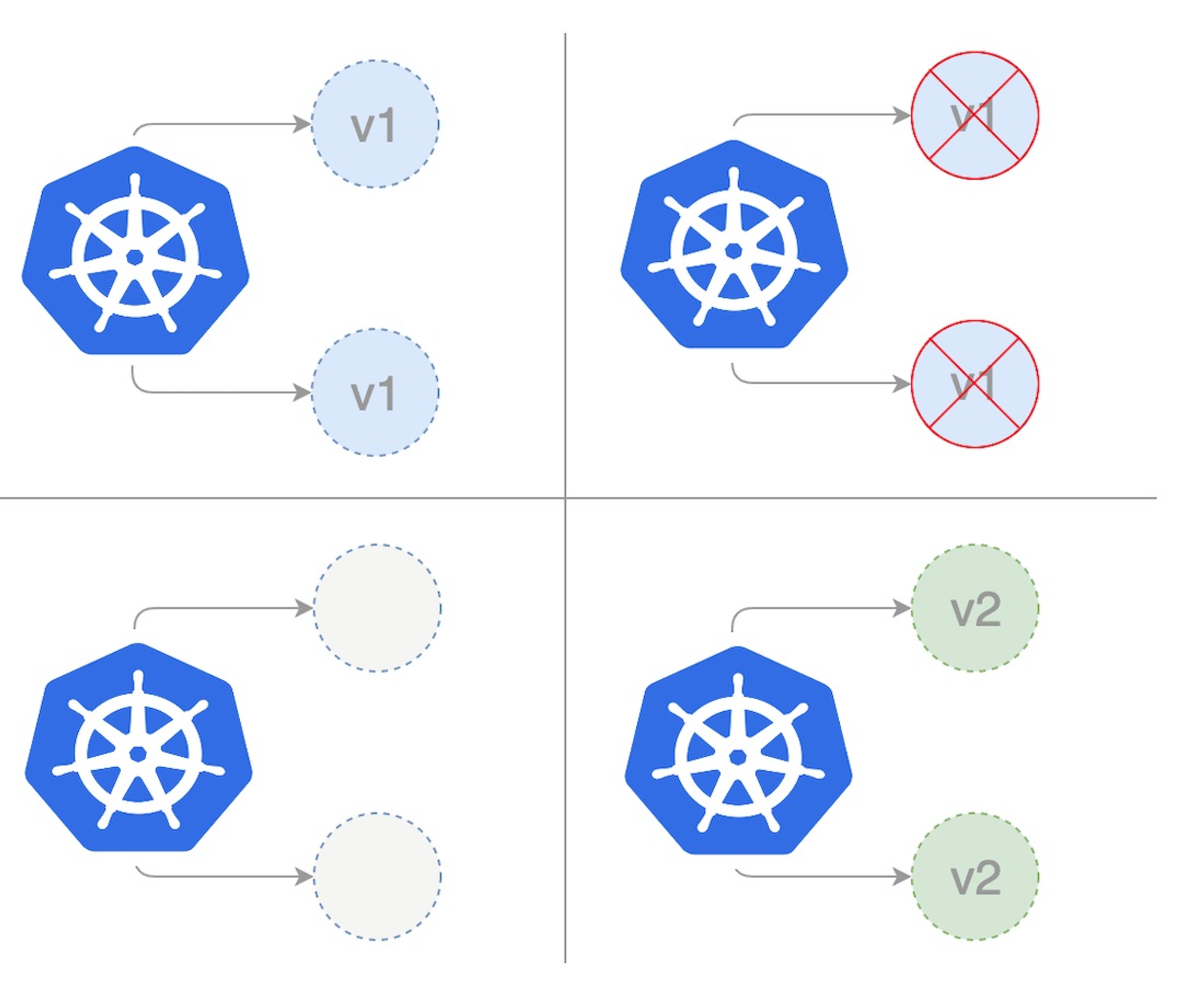
- Definition: In the Recreate strategy, the existing instances of the application are terminated all at once, and then new instances are created with the updated configuration.
✅ Pros:
Simple and straightforward.
Ensures all instances are running the same version.
❗️ Cons**:**
- Downtime during the transition.
Example: If you have version 1.0 of your application deployed, updating to version 2.0 using the Recreate strategy would involve terminating all instances running version 1.0 and then deploying new instances running version 2.0.
When to use: Recreate deployment strategy is suitable for applications where downtime during deployment is acceptable or when the application startup time is short.
If your application is stateless and can afford to be temporarily unavailable during updates, you can use the Recreate strategy.
apiVersion: apps/v1
kind: Deployment
metadata:
name: archetype-deployment
labels:
app: cloudchamp
spec:
replicas: 3
selector:
matchLabels:
app: cloudchamp
strategy:
type: Recreate
template:
metadata:
labels:
app: cloudchamp
spec:
containers:
- name: deploy
image: cloudchamp/test:v2
ports:
- containerPort: 80
What is Rolling Update
Changes are made bit by bit, so things keep working smoothly.
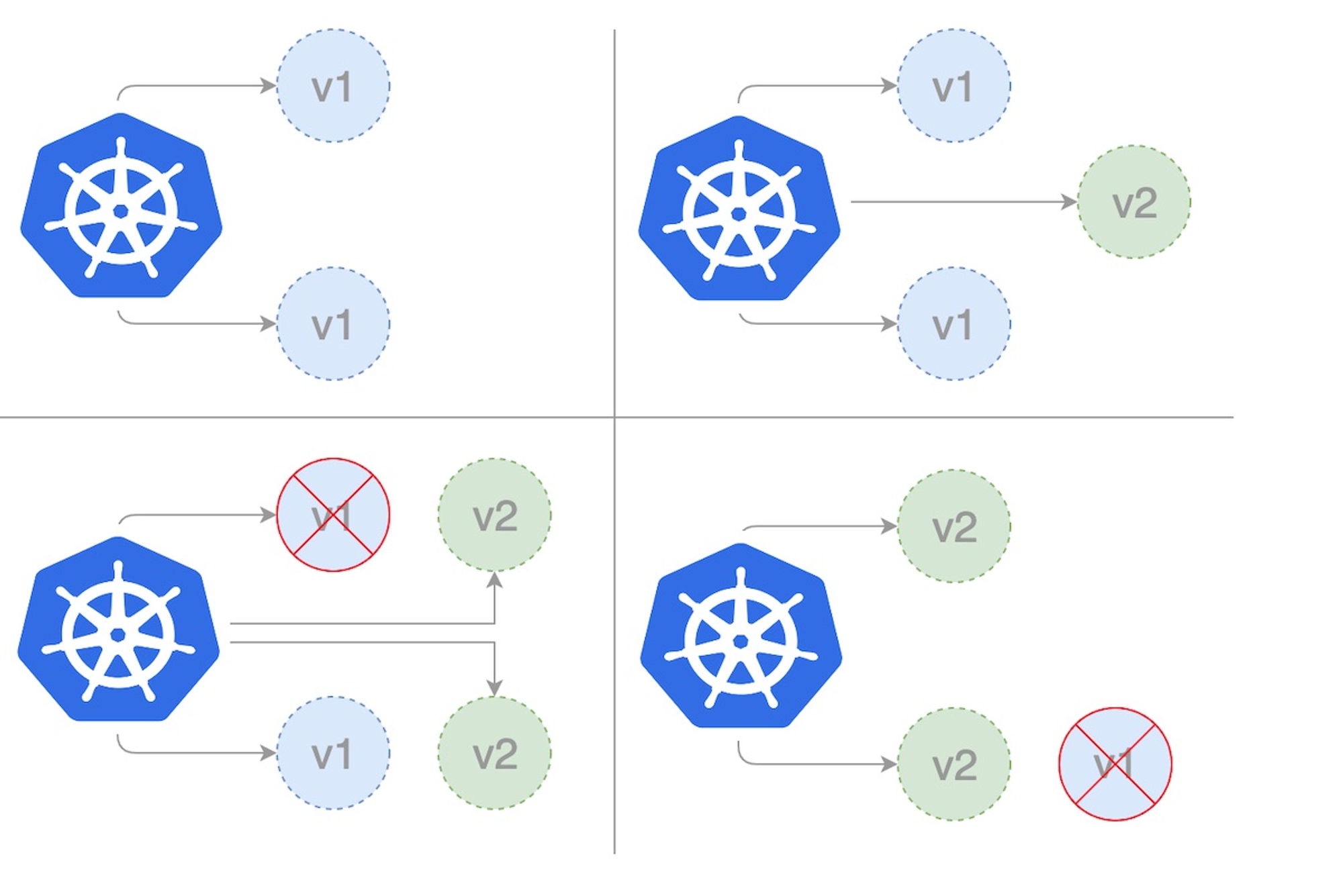
Definition: In Rolling Update, new instances are gradually created while old instances are gradually terminated, ensuring a smooth transition without downtime.
✅ Pros:
Zero downtime deployment.
Easy to roll back in case of issues.
❗️ Cons**:**
Longer deployment time compared to Recreate.
Example: When updating from version 1.0 to version 2.0 using Rolling Update, Kubernetes will gradually replace instances running version 1.0 with instances running version 2.0, ensuring continuous availability.
When to use: Rolling Update is suitable for applications that require zero downtime during deployment and can handle multiple versions running simultaneously.
Rolling updates can be achieved by simply updating the image tag in the Deployment manifest. Kubernetes will automatically perform rolling updates.
apiVersion: apps/v1
kind: Deployment
metadata:
name: myapp
spec:
replicas: 3
selector:
matchLabels:
app: myapp
strategy:
type: RollingUpdate
rollingUpdate:
maxUnavailable: 1
maxSurge: 1
template:
metadata:
labels:
app: myapp
spec:
containers:
- name: myapp
image: myapp:v2.0
Apply this manifest with kubectl apply -f rolling-update-deployment.yaml.
Blue-Green deployment strategy
Users switch from the old version to the new one without noticing.
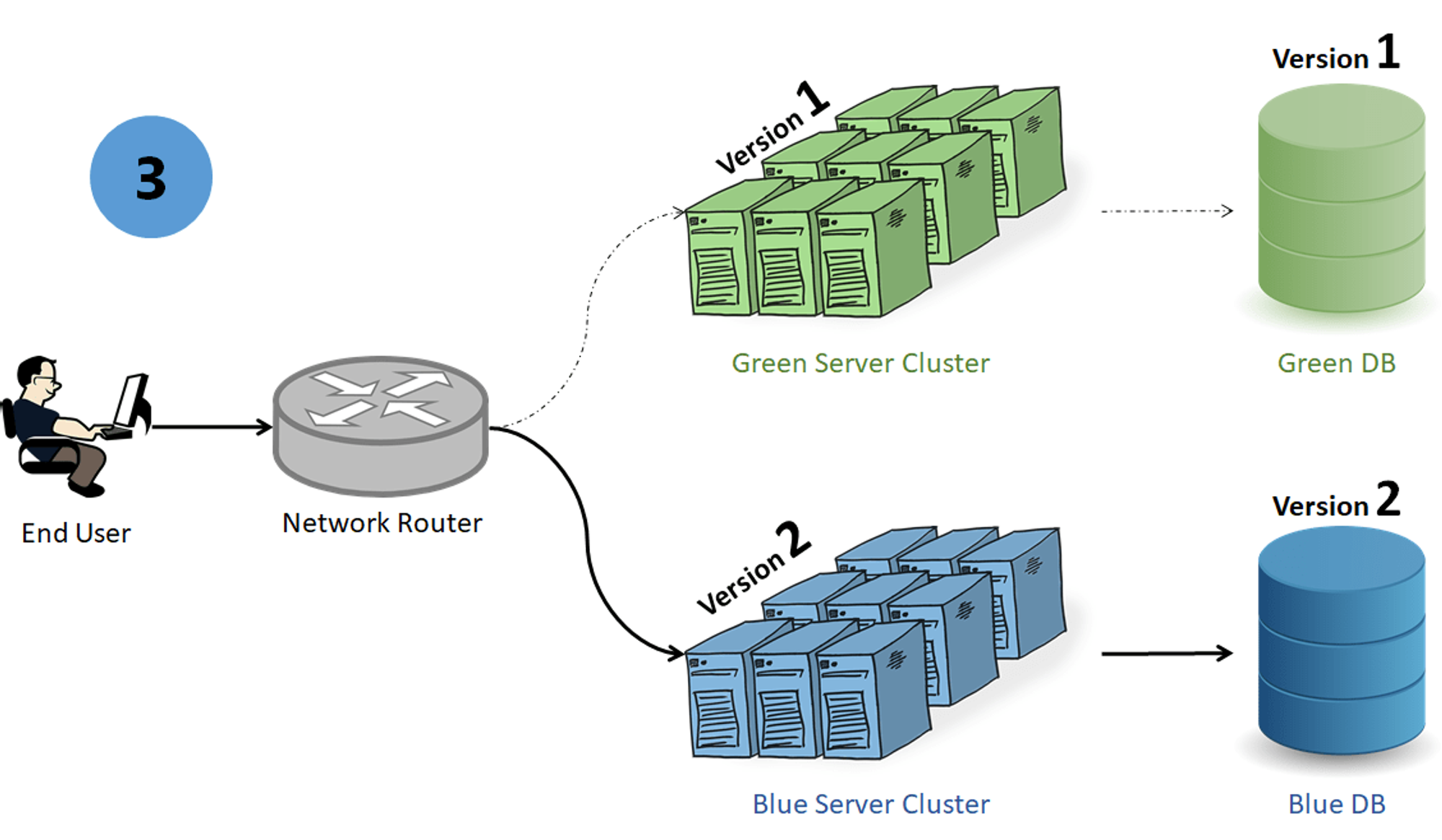
- Definition: Blue Green deployment involves running two identical production environments (Blue and Green), with only one active at any time. The inactive environment can be updated without affecting users, and then traffic is switched to the updated environment.
✅ Pros:
Zero downtime deployment.
Easy rollback by switching traffic back to the previous environment.
❗️ Cons**:**
Requires double resources to maintain two identical environments.
Example: If version 1.0 of your application is running in the Blue environment, deploying version 2.0 to the Green environment allows you to test the update before switching user traffic.
When to use: Blue Green deployment is useful when you need to ensure minimal downtime and easy rollback capabilities.
Implementing Blue Green deployment involves maintaining two identical environments
apiVersion: v1
kind: Service
metadata:
name: myapp
spec:
selector:
app: myapp
ports:
- protocol: TCP
port: 80
targetPort: 8080
---
apiVersion: apps/v1
kind: Deployment
metadata:
name: myapp-blue
spec:
replicas: 3
selector:
matchLabels:
app: myapp
template:
metadata:
labels:
app: myapp
color: blue
spec:
containers:
- name: myapp
image: myapp:v1.0
---
apiVersion: apps/v1
kind: Deployment
metadata:
name: myapp-green
spec:
replicas: 3
selector:
matchLabels:
app: myapp
template:
metadata:
labels:
app: myapp
color: green
spec:
containers:
- name: myapp
image: myapp:v2.0
Apply this manifest with kubectl apply -f blue-green-deployment.yaml.
- What is Canary Release
A few users try out the new version first to see if it works well.
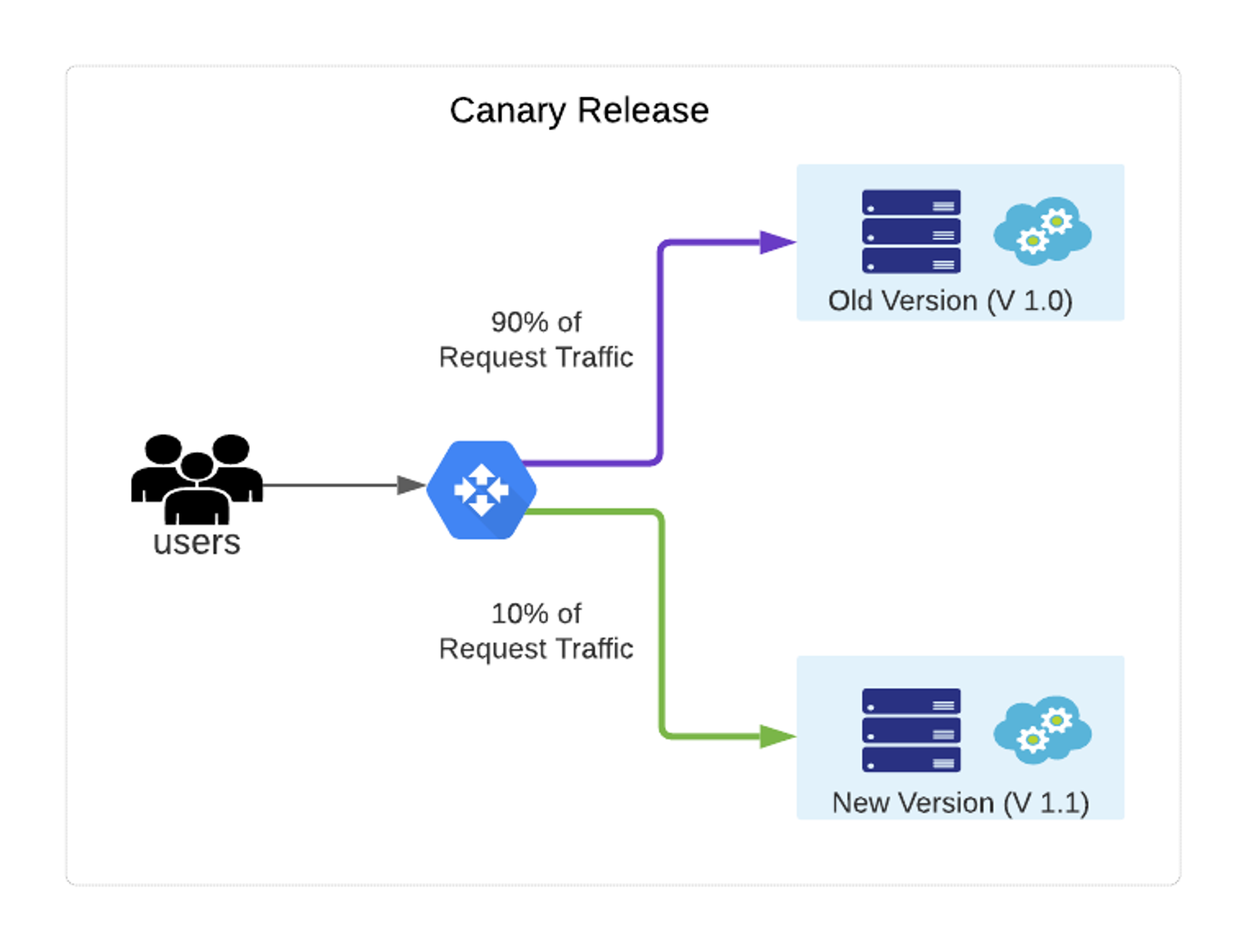
Definition: Canary deployment involves rolling out updates to a small subset of users or servers before rolling it out to the larger group, allowing for testing in a real-world scenario before full deployment.
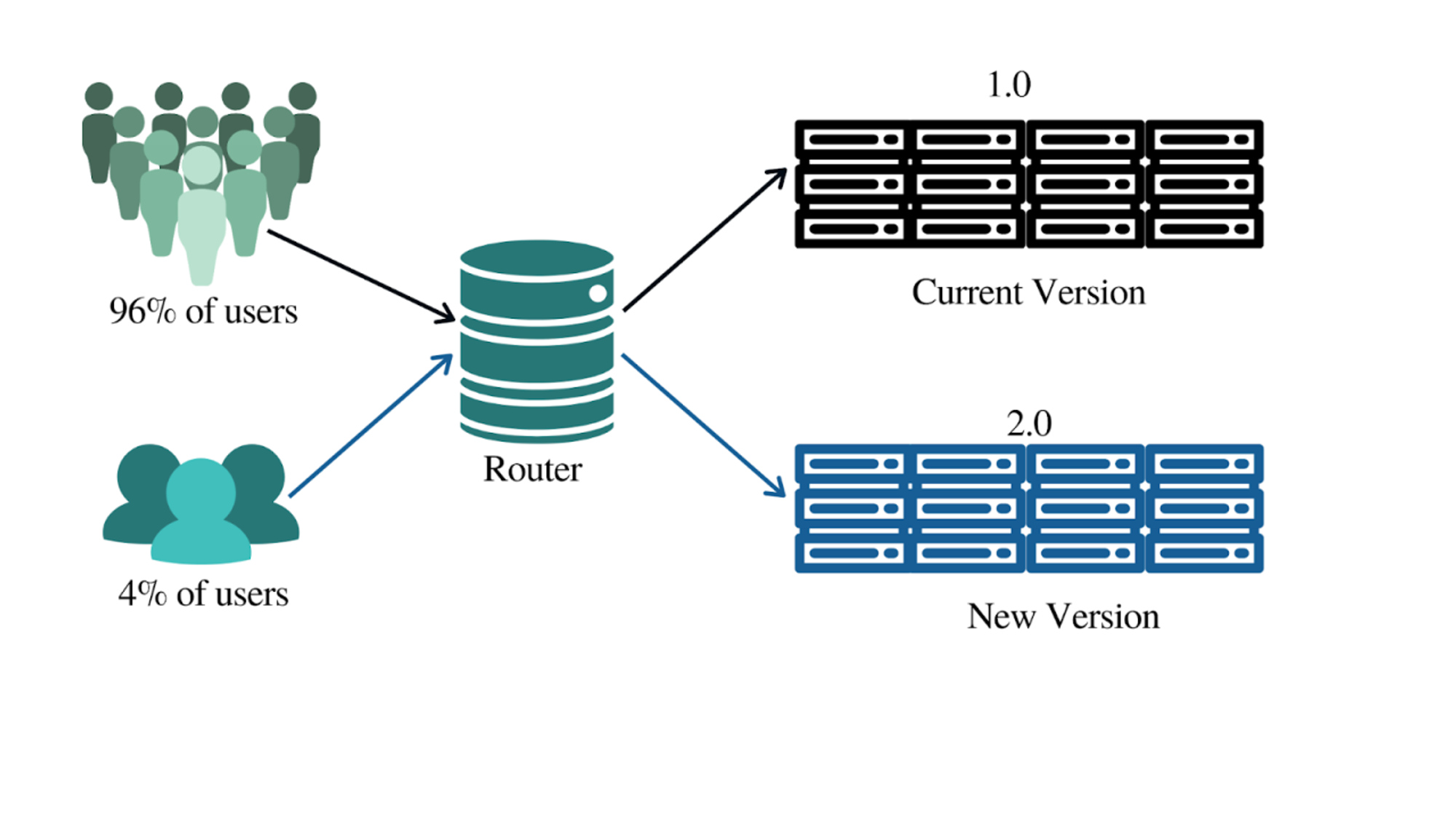
✅ Pros:
Risk mitigation by testing with a small subset of users.
Quick detection of issues before affecting all users.
❗️ Cons**:**
Requires careful monitoring and management of traffic routing.
Example: Deploying version 2.0 of your application to 10% of your user base initially to observe performance and gather feedback before fully deploying to all users.
When to use: Canary deployment is ideal when you want to test new features or changes with a small subset of users before rolling out to everyone.
Deploying a canary release can be done by gradually routing a percentage of traffic to the new version.
apiVersion: networking.istio.io/v1alpha3
kind: VirtualService
metadata:
name: myapp
spec:
hosts:
- myapp.example.com
http:
- route:
- destination:
host: myapp
subset: v2
weight: 10
- destination:
host: myapp
subset: v1
weight: 90
Apply this manifest with kubectl apply -f canary-deployment.yaml.
A/B Testing
Some users see one version, while others see a different version, to see which one they like better.
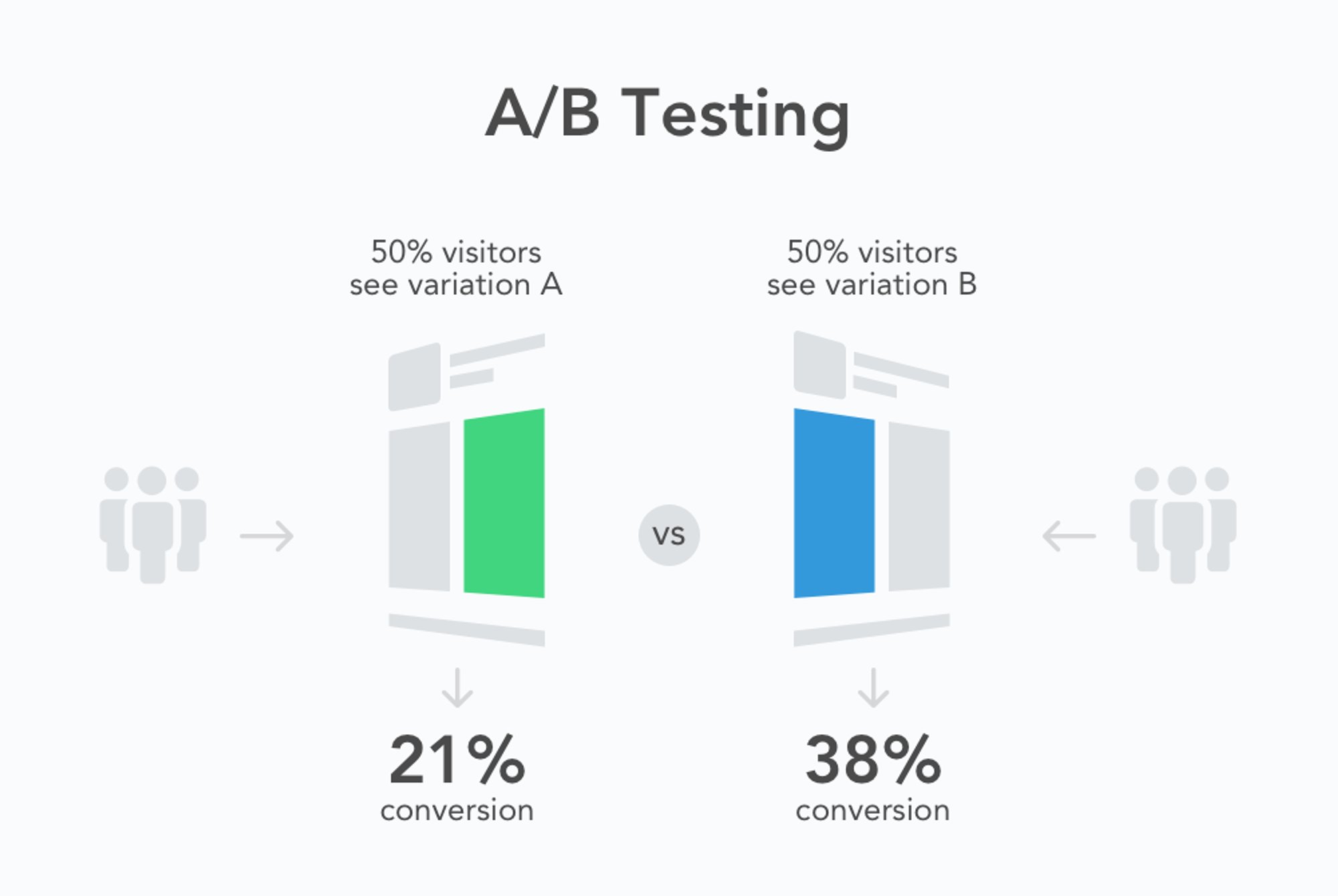
Definition: A/B testing involves deploying multiple versions of an application simultaneously and directing different users or requests to each version to compare performance or features.
✅ Pros:
Allows for comparison of different versions in real-world scenarios.
Enables data-driven decision-making based on user behavior
❗️ Cons**:**
Complexity in managing multiple versions simultaneously.
Example: Deploying version A and version B of a feature to different user segments to measure which version performs better in terms of user engagement or conversion rates.
When to use: A/B testing is appropriate when you want to compare the performance or effectiveness of two different versions of your application.
A/B testing is usually implemented within the application's codebase rather than in Kubernetes manifests. Here's a simplified example in Python:
if feature_enabled('new_version'):
# Use new version code
else:
# Use old version code
You would deploy both versions of the code and control which version is executed based on a feature flag or some other condition.
We need to keep in mind while selecting a deployment strategy for our use Cases:
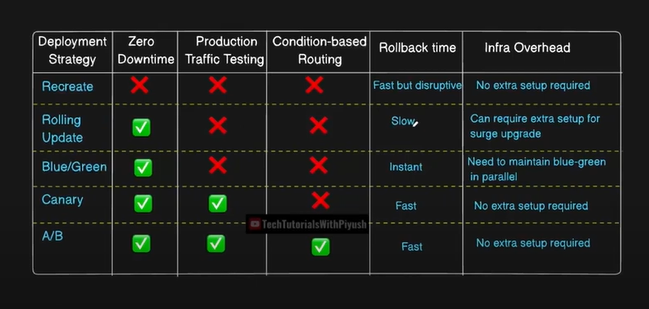
Subscribe to my newsletter
Read articles from Ashwin directly inside your inbox. Subscribe to the newsletter, and don't miss out.
Written by

Ashwin
Ashwin
I'm a DevOps magician, conjuring automation spells and banishing manual headaches. With Jenkins, Docker, and Kubernetes in my toolkit, I turn deployment chaos into a comedy show. Let's sprinkle some DevOps magic and watch the sparks fly!